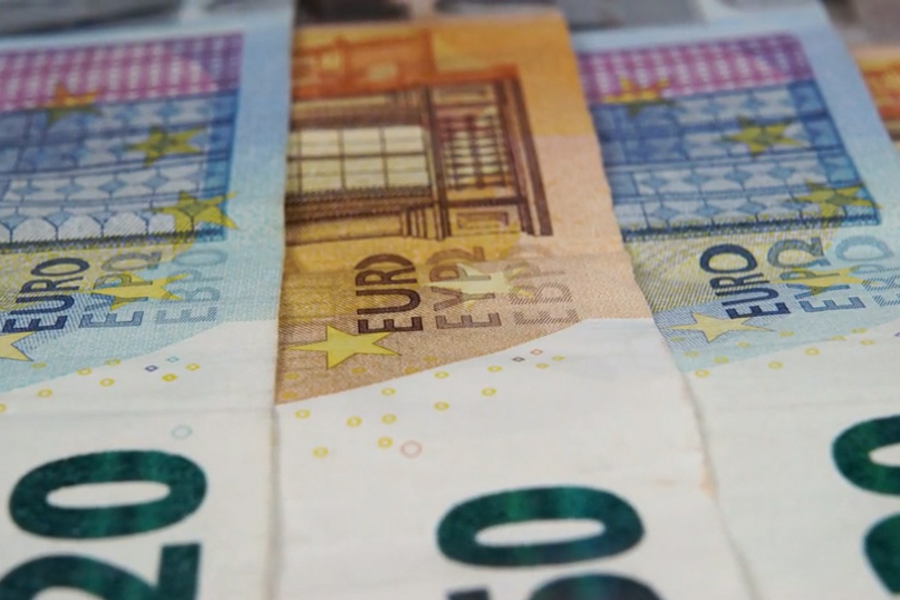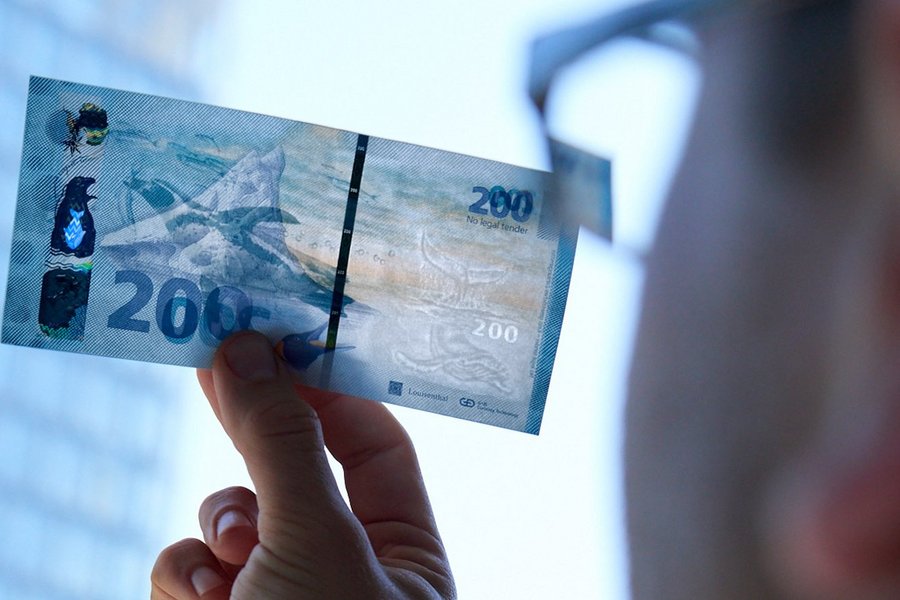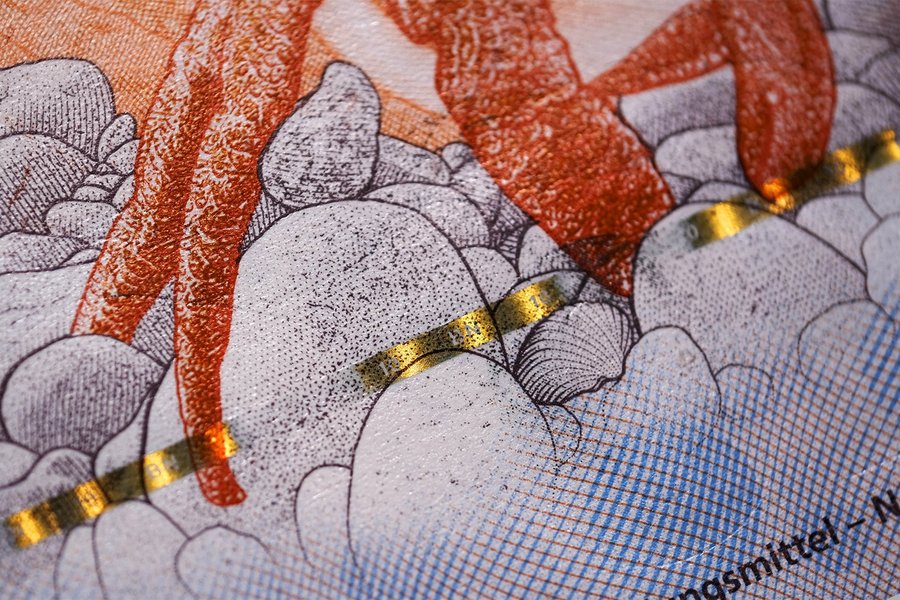In 1930, an eight-year-old boy by the name of Albert Pick bought two emergency banknotes for one pfennig. They were the first two banknotes of what was to become a titanic collection. It was an unusual hobby – not just for a boy of his age, but in the wider world in general – yet it became a lifelong vocation. Over the course of his lifetime, he collected hundreds of thousands of banknotes, and we have the dedicated numismatist (a studier/collector of coins/banknotes) to thank for one of the world’s most comprehensive banknote collections, now maintained by the G+D Stiftung Geldscheinsammlung (the G+D Foundation Banknote Collection).
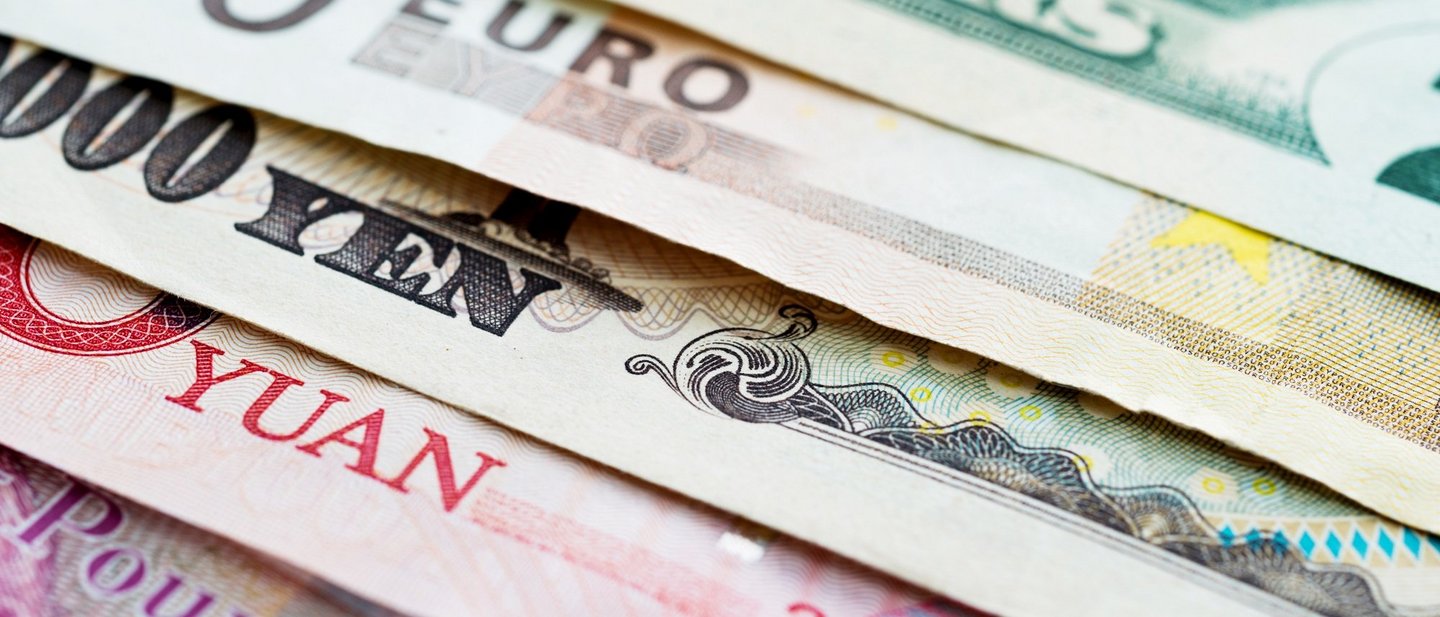
A noteworthy collection
As G+D celebrates its 170th anniversary, the G+D Foundation Banknote Collection presents the development of paper money over the years.
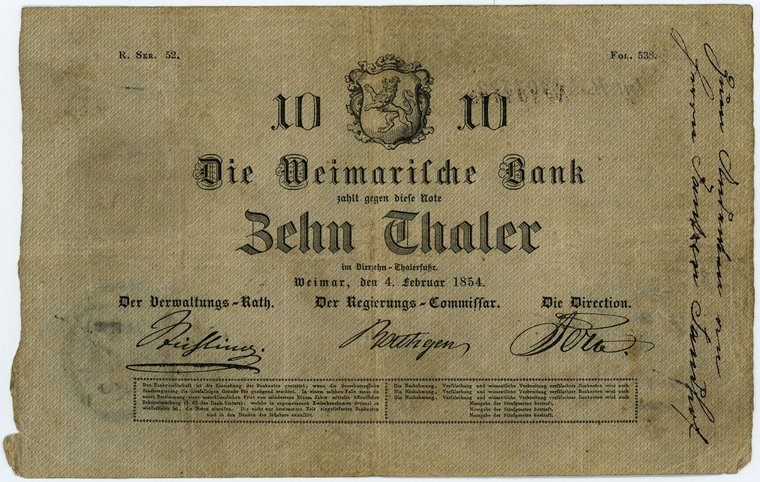
A new exhibition for employees and customers, named “Welt im Wandel – Geld im Wandel” (“World in Flux – Money in Flux”), shows several of the collection’s highlights. “We start in the middle of the 19th century, when paper money was developing at a rapid rate and becoming increasingly important – and when G+D played a significant role in the development of printing technology. The exhibition features the first banknote printed by G+D, in 1854,” says Kirsten Peter, Member of the Board, G+D Stiftung and G+D Stiftung Geldscheinsammlung. The G+D Stiftung Geldscheinsammlung works to preserve Pick’s extensive collection and has added to it over the years.
“The thematic focus of the exhibition is on a world that is in a constant state of change. A world whose political, economic, and social changes are always reflected in the banknotes of the time: from industrialization and the issuance of private central banks, through the gradual establishment of central banks, the crisis of hyperinflation, and the currency reform post–World War II, to the euro and the most recent issues by central banks outside the euro area,” says Leonard Königer, who took over the scientific, content-related, and conservation work of the banknote collection of the G+D Stiftung Geldscheinsammlung recently. He has been working at the Munich State Coin Collection since 2015, first as a processor of found coins, then later on as head of the digitalization project and head of museum education, as well as a lecturer in ancient history at the University of Augsburg.
“The 170-year history of G+D is shown over the course of this exhibition – from the first banknote printed by G+D to the present day. It is symbolic of our dedication to preserving banknotes and the wider impact they have as a reflection of society and a marker of historic moments“
Member of the Board, G+D Stiftung and G+D Stiftung Geldscheinsammlung
Banknotes as a reflection of society
Peter and Celia von Mitschke-Collande, members of the board at the G+D Stiftung Geldscheinsammlung; Königer; and former content curator Katharina Depner speak passionately about the collection. One of Peter’s favorite aspects of her role is constantly stumbling across new treasures: “There are so many exciting things to be discovered. Recently, we discovered a banknote featuring a very young Queen Elizabeth II.”
Depner nods: “Very young! She was about eight or nine years old – it’s perhaps the youngest depiction of Queen Elizabeth II on a banknote. It’s also available to view in the exhibition.” For the most-featured woman on a banknote worldwide,1 this one is quite a coup.
Indeed, the reflection of society on banknotes is something that all of them find so fascinating. “There are many pieces that stick with you,” says Depner. “There is a Dutch edition from 1945 that has the date of liberation from the German occupation. And then just an excerpt from the national anthem – it’s about peace and tyranny. It was very moving.
There is also a series from the First Czechoslovak Republic, from 1918, around when the state was formed. “An Art Nouveau artist [Alphonse Mucha] designed the whole series of banknotes and tried to create a completely new iconography for this new state with Slavic history and Slavic elements. He put a great deal of thought into it.”
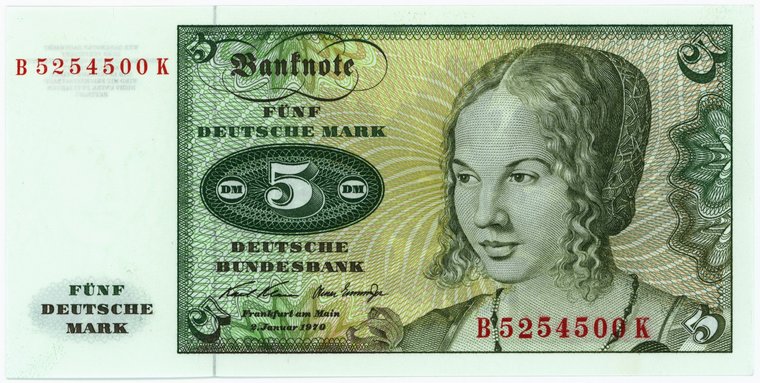
G+D’s entire collection covers more than 300,000 banknotes from around the globe and documents the development of paper money from its beginnings in the 14th century to the present day. The collection is one of the most diverse and important collections worldwide.
“The exhibition concludes with an outlook: although a dematerialization of money is already emerging to a large extent, printed banknotes as cash will not become obsolete in the future and will continue to retain a firm place in our daily payment transactions,” says Königer.
Preserving historical treasures
The preservation and conservation of these incredible pieces is of utmost importance for the G+D Stiftung Geldscheinsammlung, and von Mitschke-Collande emphasizes the importance of collaboration with scientists in preserving the banknotes: “Scientific collaboration takes place with numismatics. This is the field dedicated to coins and banknotes, with coins being the main theme. Banknotes are considerably younger than coins, in their history.”
Peter says that the organization also recognizes the importance of sharing these fascinating glimpses into the past with a wider audience. “The collection should be made accessible to the public in different ways, and we are working on a concept to increase that. We are also involved in the bavarikon digitalization project.2 We have created a small virtual exhibition and some highlights that are described in detail.” bavarikon is Bavaria’s internet portal to present arts and culture in a digitalized form to make them accessible to everyone.
“The bavarikon digitalization project aims to make the collection more accessible. It’s a nice way to make the banknote collection a little more tangible“
Member of the Executive Board, G+D Stiftung and G+D Stiftung Geldscheinsammlung
The G+D Stiftung Geldscheinsammlung also shares many of its banknotes with galleries and museums for exhibitions, as von Mitschke-Collande explains: “It is often the case that museums from other focus areas approach us. For example, there was a large exhibition on Karl Marx, and it was fitting to show a few banknotes from that time. With banknotes, you can always connect to a wide variety of themes through the motifs that can be seen.”
Von Mitschke-Collande underlines the dedication to preserving such precious banknotes. “The G+D Stiftung Geldscheinsammlung is a public foundation – it used to be the HVB Stiftung Geldscheinsammlung,” she explains. “The collection is related to G+D’s core business and that’s partly why it is so important to the G+D family – so that the cultural heritage is secured and such treasures are not lost.”
Unsurprisingly, the work that goes into conserving the banknotes is not to be taken lightly. As Depner explains, “The banknotes are housed in specially made albums created by a bookbinder and meet the relevant standards: they need to be resistant to aging, etc. They are very flexible, which is important because we are constantly adding notes. We also have special small envelopes, e.g. for emergency money, which have been specially made. In general, we have the perfect climate in this basement room where we can maintain the temperature that we need for paper – between 16 and 18 degrees Celsius.”
A short history of banknotes
We think nothing of sliding a banknote across a counter to pay for a coffee. How often do you think about the millennia of banknote development and how vital these past and future innovations are for all parts of our daily lives? It is perhaps no surprise that paper money originates from the country that first produced paper using mulberry fibers: China. G+D is in possession of one of the world’s earliest banknotes, a 14th-century banknote from China’s Ming dynasty.
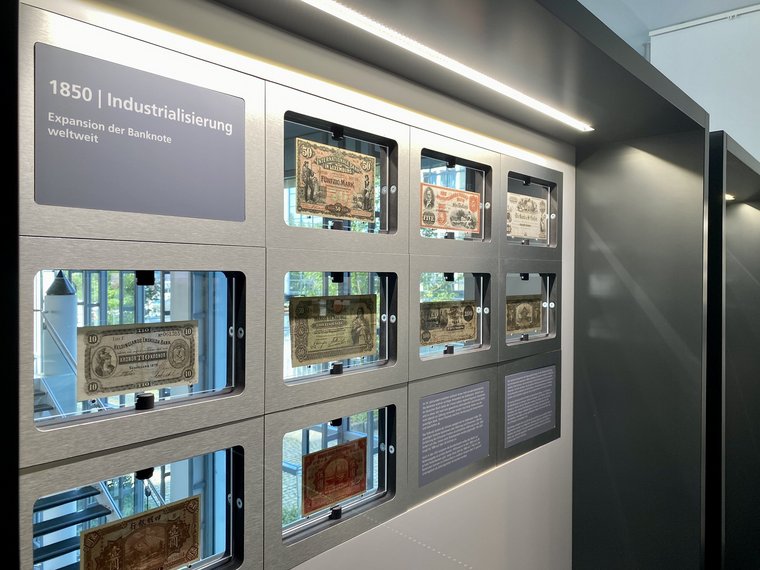
In contrast, Europe’s paper money history is much shorter – it wasn’t until the mid-19th century that things really got going. In 1852, G+D was founded, and two years later, they had printed their first banknote. Over the past 170 years, countless innovations have helped to create the durable, hard-to-counterfeit banknotes we use today.
One of the main developments in the history of paper money came with centralization. It’s hard to believe that in the mid-19th century, banknotes were only valid regionally. Peter provides an example: “A banknote from 1854 from the Weimarische Bank – printed by G+D – could only be used in the Weimar area. You couldn't go to Berlin and do business with it – it was local, and that made things complicated. There were many different currencies within Germany alone. Even back then, Frankfurt was a huge financial center where the currencies were exchanged.”
Since then, security innovations, too, have advanced at a great pace. Peter says, “There was an extreme development. Previously, signatures or seals were security features – and very quickly, security technologies were cultivated.” G+D was one of the pioneers in this field. “The company developed the so-called Schaurand – a free space on the banknote that enables you to see the watermark better, without holding it up to the light,” continues Peter. “The exhibition shows the technological developments of paper money very nicely.” Von Mitschke-Collande agrees: “Banknotes also reflect trends and show cultural heritage – that’s something that can also be seen at the exhibition.”
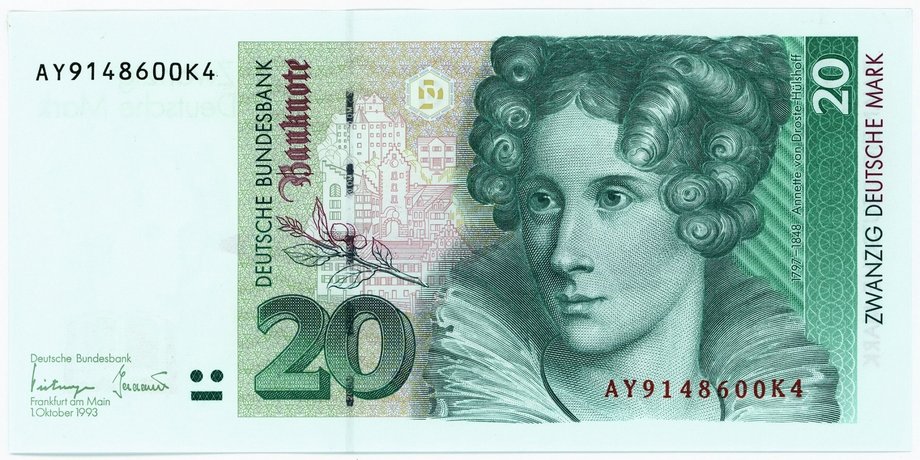
From preserving the past, to a look at the future
As the foundation’s collection continues to grow, what are the G+D Stiftung Geldscheinsammlung’s plans for the future? Peter is one of the people responsible for further developing the foundation’s concept. “We’re working on a holistic strategy and are developing it in the following areas: the progress of digitalization and how we can further digitalize the collection; the partnerships that are available and the possibilities to build global networks; the potential for collaborative curation; how we can ensure added value for the company; and the placement and positioning of the company in the future.”
How have people paid in the past, and how will we pay in the future? The evolution of payment is the foundation of our economics, society, and daily lives. Innovations in payment go hand in hand with innovations in other areas. As such, it is important to learn from the past, so that we can see the requirements of the future more clearly.
Published: 17/08/2022
Share this article
Don’t miss out on the latest articles in G+D SPOTLIGHT: by subscribing to our newsletter, you’ll be kept up to date on latest trends, ideas, and technical innovations – straight to your inbox every month.
